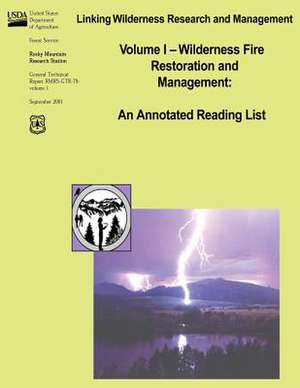Linking Wilderness Research and Mangement
Autor Marion Hourdequin Editat de Vita Wright Contribuţii de U. S. Department of Agricultureen Limba Engleză Paperback
Preț: 95.07 lei
Nou
Puncte Express: 143
Preț estimativ în valută:
18.19€ • 19.04$ • 15.05£
18.19€ • 19.04$ • 15.05£
Carte disponibilă
Livrare economică 15-29 martie
Preluare comenzi: 021 569.72.76
Specificații
ISBN-13: 9781480172227
ISBN-10: 1480172227
Pagini: 48
Dimensiuni: 216 x 279 x 3 mm
Greutate: 0.14 kg
Editura: CREATESPACE
ISBN-10: 1480172227
Pagini: 48
Dimensiuni: 216 x 279 x 3 mm
Greutate: 0.14 kg
Editura: CREATESPACE
